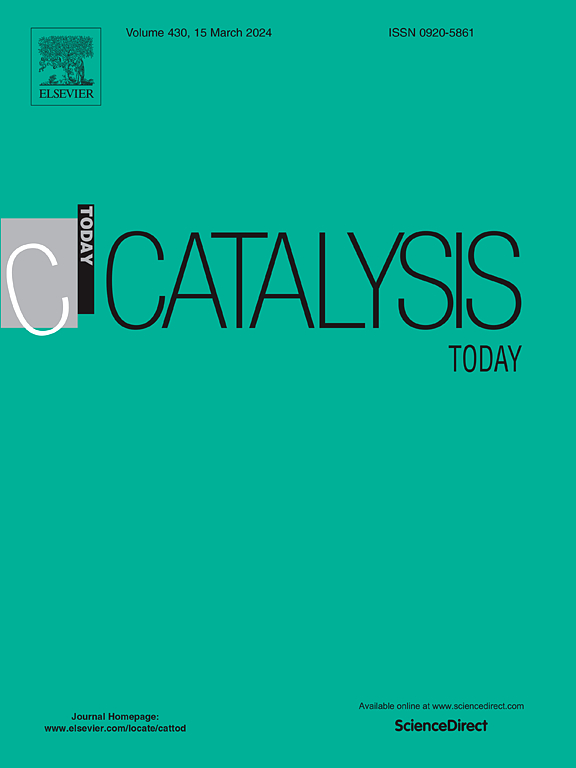Synthesis of glycerol carbonate from glycerol and CO2 over Cu/In2O3/ZnO nanostructured catalyst
IF 5.2
2区 化学
Q1 CHEMISTRY, APPLIED
引用次数: 0
Abstract
The excess glycerol generated as a by-product in the biodiesel sector has intrigued researchers to explore the catalytic pathways for the transformation of this platform molecule to value-added components, such as glycerol carbonate. In the present investigation, Cu/In2O3/ZnO catalyst with variable Cu loading was synthesized utilizing a conventional precipitation technique. The resultant catalyst was employed for direct carbonation of glycerol using CO2 for the production of glycerol carbonate. The incorporation of Cu into the In2O3/ZnO system contributed significantly in improving the catalytic property of the material. The impact of various reaction parameters, including the presence of dehydrating agent, reaction temperature, time, and CO2 pressure on the resultant product of the reaction was systematically assessed. Under the optimized reaction conditions of 150 ºC temperature, 5 h reaction time, 5 MPa CO2 pressure, and 30 mmol of 2-cyanopyridine, the maximum yield of glycerol carbonate recorded was 24.32 %. Catalyst’s heterogeneity was confirmed using Sheldon’s hot filtration test.
求助全文
约1分钟内获得全文
求助全文
来源期刊

Catalysis Today
化学-工程:化工
CiteScore
11.50
自引率
3.80%
发文量
573
审稿时长
2.9 months
期刊介绍:
Catalysis Today focuses on the rapid publication of original invited papers devoted to currently important topics in catalysis and related subjects. The journal only publishes special issues (Proposing a Catalysis Today Special Issue), each of which is supervised by Guest Editors who recruit individual papers and oversee the peer review process. Catalysis Today offers researchers in the field of catalysis in-depth overviews of topical issues.
Both fundamental and applied aspects of catalysis are covered. Subjects such as catalysis of immobilized organometallic and biocatalytic systems are welcome. Subjects related to catalysis such as experimental techniques, adsorption, process technology, synthesis, in situ characterization, computational, theoretical modeling, imaging and others are included if there is a clear relationship to catalysis.
 求助内容:
求助内容: 应助结果提醒方式:
应助结果提醒方式:


